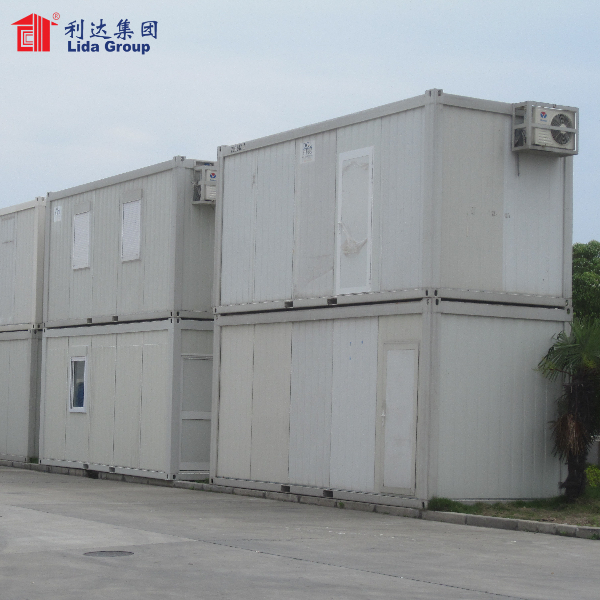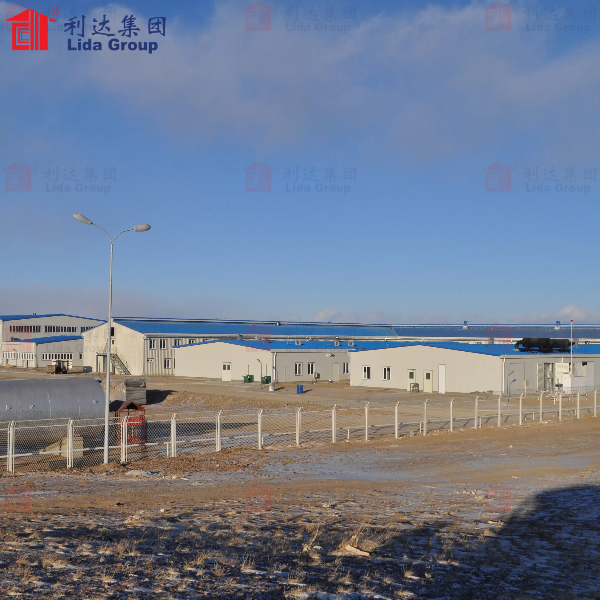In an increasingly mobile world, the need for efficient and adaptable housing solutions has become paramount. Temporary housing is essential in various contexts, including disaster relief, workforce accommodation, and urban development. Lida Group, a leader in the modular construction industry, has developed innovative modular homes that are transforming the landscape of temporary housing. This article explores the features, benefits, and applications of Lida Group’s modular homes, highlighting their role in revolutionizing temporary living solutions.
Understanding Modular Homes
What Are Modular Homes?
Modular homes are prefabricated structures built in sections, or modules, in a controlled factory environment. These modules are then transported to the construction site, where they are assembled into a complete structure. This method contrasts with traditional construction, which often involves extensive on-site labor and unpredictable timelines. Lida Group specializes in creating high-quality modular homes that cater to diverse needs, particularly in temporary housing scenarios.
Key Features of Lida Group’s Modular Homes
- Rapid Construction: One of the most significant advantages of modular homes is their speed of assembly. Lida Group’s modular homes can often be constructed in a matter of weeks, significantly reducing the time required to provide housing solutions.
- Quality Control: Factory production allows for rigorous quality assurance processes, ensuring that all components meet high safety and performance standards.
- Cost-Effectiveness: The streamlined production process typically results in lower labor and material costs, making Lida Group’s modular homes an affordable option for temporary housing.
- Customization Options: Lida Group offers a variety of designs and configurations, allowing clients to tailor their modular homes to fit specific requirements and preferences.
- Sustainability: Many of Lida Group’s modular homes are designed with eco-friendly materials and energy-efficient systems, promoting sustainable construction practices.
The Importance of Temporary Housing
1. Disaster Relief
In times of crisis, such as natural disasters, the need for immediate housing solutions becomes critical:
- Rapid Deployment: Modular homes can be transported and assembled quickly, providing immediate shelter for displaced individuals and families.
- Flexible Solutions: These homes can be customized to meet the specific needs of affected communities, ensuring adequate shelter is available during recovery efforts.
2. Workforce Accommodation
Many industries require temporary housing solutions to support their workforce:
- Construction and Mining: Workers often need housing near job sites, especially in remote locations. Modular homes provide a comfortable and efficient solution.
- Seasonal Employment: Industries such as agriculture and tourism often require temporary housing for seasonal workers. Modular homes can be deployed quickly to meet these fluctuations in demand.
3. Urban Development
As cities expand and populations grow, temporary housing solutions are often necessary:
- Affordable Housing: Modular homes can serve as temporary housing while permanent solutions are being developed, helping to alleviate housing shortages in urban areas.
- Transitional Housing: They can provide transitional solutions for individuals and families in need of housing support as they move toward more permanent arrangements.
The Design and Construction Process
1. Planning and Needs Assessment
The construction of effective modular homes begins with thorough planning:
- Understanding Client Needs: Engaging with clients to assess their specific requirements, including the number of occupants and desired amenities, is crucial for effective design.
- Site Evaluation: Evaluating the site for accessibility, environmental conditions, and available resources helps inform the design process.
2. Modular Production
Once the design is finalized, the construction process begins off-site:
- Factory Production: Modular units are constructed in a controlled environment, allowing for precision and quality control. This typically involves assembling walls, roofs, and internal fixtures.
- Quality Assurance: Each unit undergoes rigorous inspections to ensure safety and quality standards are met before being transported to the site.
3. Transportation and Assembly
The next phase involves transporting the modular units to the construction site:
- Logistics Management: Coordinating transportation logistics is essential to ensure that units arrive on time and in good condition.
- On-Site Assembly: Once on-site, the units can be quickly assembled into the desired configuration, often within days.
4. Final Touches
After assembly, the final steps include:
- Interior Finishing: Adding furnishings and appliances ensures that the modular homes are ready for occupancy.
- Site Preparation: Ensuring that the surrounding area is safe and accessible for occupants, including landscaping and utility connections.
Benefits of Lida Group’s Modular Homes
1. Flexibility and Customization
Lida Group’s modular homes are designed with flexibility in mind:
- Customizable Configurations: Clients can choose layouts that best suit their workforce, including options for individual units or shared accommodations.
- Expandable Designs: As the workforce grows or changes, Lida Group’s modular homes can be easily expanded or reconfigured to meet new demands.
2. Cost-Effectiveness
Investing in Lida Group’s modular homes can lead to substantial cost savings for companies:
- Lower Initial Investment: The use of prefabricated materials significantly reduces construction costs, making modular homes a budget-friendly option.
- Operational Savings: Improved worker satisfaction and reduced turnover can save companies money in the long run.
3. Sustainability
Lida Group’s commitment to sustainability is evident in their modular homes:
- Eco-Friendly Materials: By utilizing sustainable materials and practices, Lida Group minimizes the environmental impact of their constructions.
- Energy Efficiency: Incorporating energy-efficient systems can reduce reliance on fossil fuels and lower operational costs.
Applications of Lida Group’s Modular Homes
1. Disaster Relief Housing
Lida Group’s modular homes are invaluable in disaster relief efforts:
- Rapid Response: After natural disasters, modular homes can be quickly assembled to provide temporary housing for displaced individuals and families.
- Community Resilience: By providing immediate shelter, these homes help restore stability and support communities during recovery.
2. Workforce Accommodation
Many industries benefit from Lida Group’s modular homes for workforce housing:
- Construction Camps: Modular homes can serve as comfortable living quarters for construction workers on-site, enhancing their overall well-being and productivity.
- Mining and Oil Industries: In remote locations where traditional housing is impractical, modular homes offer a practical and efficient solution.
3. Temporary Educational Facilities
Modular homes can also be utilized in the education sector:
- Classrooms: Lida Group can create modular classrooms that can be rapidly assembled to accommodate growing student populations or temporary educational needs.
- Administrative Offices: These structures can serve as administrative spaces for schools, providing flexible solutions for educational institutions.
4. Healthcare Facilities
The healthcare sector can leverage Lida Group’s modular innovations:
- Mobile Clinics: In times of crisis, modular homes can be quickly deployed as temporary clinics or healthcare facilities, ensuring communities have access to essential services.
- Long-Term Care Facilities: Modular designs can also be used for long-term healthcare solutions, providing efficient and comfortable living spaces for patients.
Case Studies: Successful Modular Housing Projects
Case Study 1: Worker Accommodation for Construction
Challenge: A major construction company needed a labor camp to accommodate workers on a large infrastructure project.
Solution: The company opted for modular homes designed by Lida Group, featuring modern living units and communal facilities.
Outcome: The project was completed ahead of schedule, and worker satisfaction significantly improved, leading to increased productivity and reduced turnover rates.
Case Study 2: Educational Facility Expansion
Challenge: A local school district needed to expand its facilities to accommodate a growing student population.
Solution: Lida Group provided modular classrooms that could be easily assembled on-site, providing additional space for learning.
Outcome: The new classrooms were ready for occupancy in a fraction of the time it would have taken for traditional construction, allowing the school to meet its needs promptly.
Case Study 3: Disaster Relief Housing
Challenge: After a natural disaster, there was an urgent need for temporary housing for displaced individuals.
Solution: Lida Group rapidly deployed modular homes to provide shelter for affected families, with each unit designed to accommodate basic living needs.
Outcome: The quick deployment of modular homes helped restore stability for displaced individuals and provided a safe living environment during recovery efforts.
The Future of Modular Homes in Temporary Housing
Trends Shaping the Industry
The future of modular homes will be influenced by several key trends:
1. Increased Demand for Sustainable Practices
As environmental awareness continues to grow, industries are under pressure to adopt sustainable practices:
- Eco-Friendly Solutions: Companies prioritizing sustainability will appeal to a growing market of environmentally conscious consumers.
- Regulatory Changes: Governments may implement stricter regulations on environmental impact, driving the need for sustainable housing solutions.
2. Technological Advancements
Advancements in technology will enhance the efficiency of modular housing:
- Smart Technologies: The integration of IoT devices will enable real-time monitoring and optimization of living conditions and resource usage.
- Automation: Automation in production processes can improve efficiency and reduce labor costs.
3. Customization and Modularity
The demand for customizable and modular designs will continue to grow:
- Flexible Accommodation Solutions: Businesses will increasingly require modular homes that can be easily adapted to changing operational needs.
- Rapid Deployment: Prefabricated solutions will allow for quick construction and minimal disruption, catering to the fast-paced demands of modern industries.
Commitment to Innovation
Leading firms in the modular housing market, including Lida Group, remain dedicated to innovation:
- Research and Development: Continuous investment in R&D ensures that companies stay at the forefront of technological advancements in modular construction.
- Client Collaboration: By working closely with clients, firms can develop tailored solutions that meet specific operational requirements and sustainability goals.
Conclusion
Lida Group’s modular homes represent a significant advancement in revolutionizing temporary housing. Their focus on rapid deployment, cost-effectiveness, and sustainability makes them an ideal choice for various applications, from disaster relief to workforce accommodation and educational facilities.
As the demand for innovative housing solutions continues to grow, modular homes will play a crucial role in enhancing living conditions and providing effective solutions for individuals and communities. The future of modular housing is promising, with the potential for innovation and improvement in living standards for diverse populations.
In an era where flexibility, efficiency, and sustainability are paramount, Lida Group’s modular homes provide a forward-thinking solution to modern housing challenges. Through strategic investments and a commitment to excellence, the modular housing sector is poised to enhance living conditions for many and contribute positively to the evolution of housing solutions. The journey toward a more efficient and sustainable future in temporary housing is just beginning, and the potential for growth and innovation is limitless.
Contact Us
Post time: Jun-17-2025


